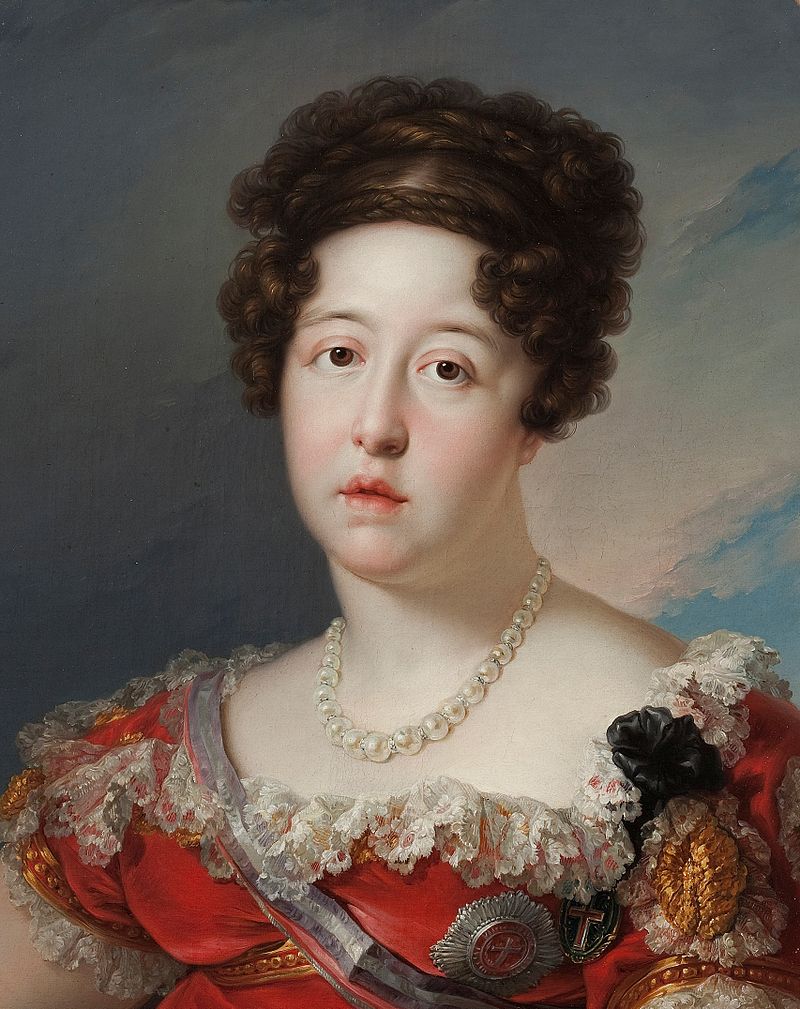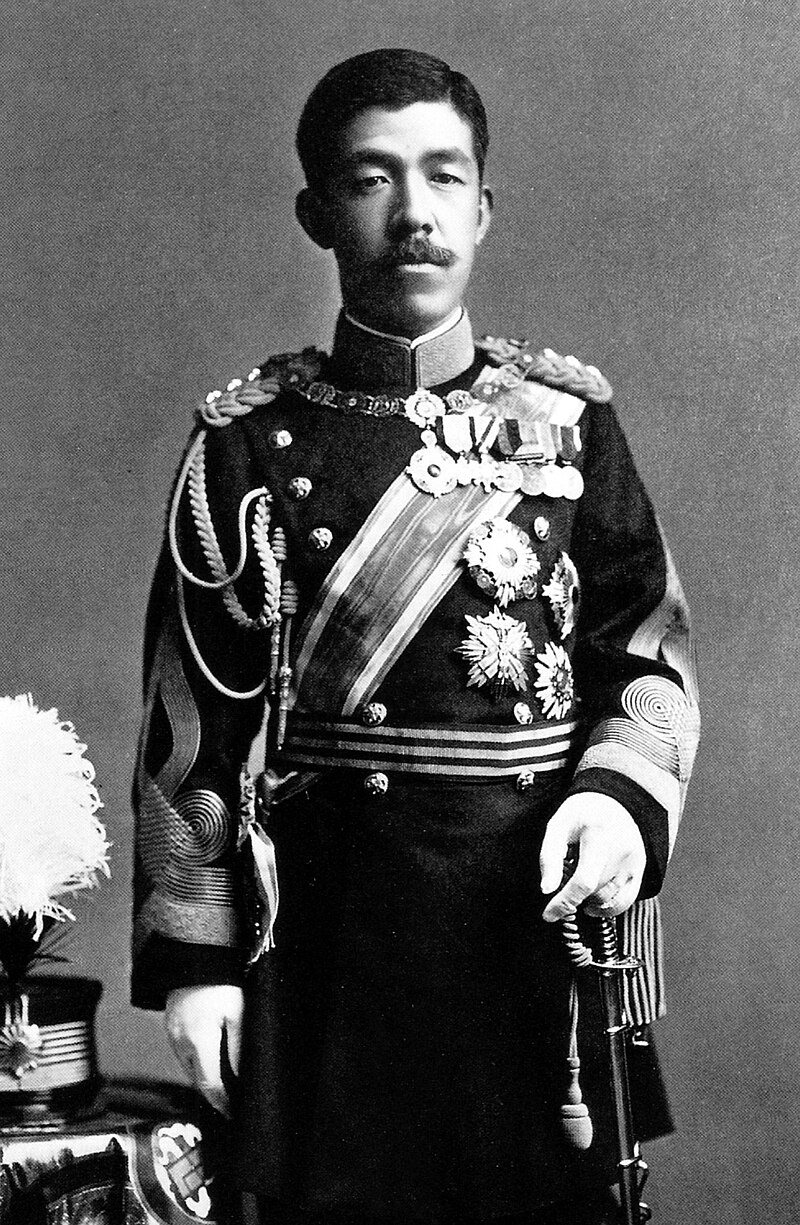© Unofficial Royalty 2023

Maria Isabel of Portugal, Queen of Spain; Credit – Wikipedia
December 26, 1771 – Birth of Julie Clary, wife of King Joseph Bonaparte of Naples and Sicily, Spain and the Indies, in Marseilles, France
Full name: Marie Julie
Marie Julie Clary was the wife of Napoleon Bonaparte’s brother Joseph Bonaparte who was King of Naples from 1806 – 1808, and King of Spain from 1808 – 1813. Julie and Joseph had two daughters. In 1808, King Carlos IV of Spain and his son King Fernando VII were summoned to a meeting with Napoleon where they forced them both to abdicate their rights to the Spanish throne. Napoleon declared the Bourbon dynasty of Spain deposed and installed his brother Joseph as King of Spain. Julie never lived in or even traveled to Spain, preferring to live in France. In 1813, Due to the defeats in the Peninsular War, Napoleon was forced to reinstate Ferdinand VII as King of Spain. Joseph went into exile in Switzerland and Julie remained in France. Joseph eventually went to the United States where he lived for seventeen years before returning to Europe. In 1840, Joseph joined Julie in Florence, where she had settled. Julie accepted him back despite his adultery In the United States which resulted in two American daughters. In 1844, Joseph died in Florence. Julie survived him by eight months dying in Florence on April 7, 1845, aged seventy-three.
Unofficial Royalty: Julie Clary Bonaparte, Queen of Spain, Queen of Naples
December 26, 1777 – Birth of Ludwig II, Grand Duke of Hesse and by Rhine, in Darmstadt, Landgraviate of Hesse-Darmstadt, now in Hesse Germany
In 1804, Ludwig married his first cousin, Princess Wilhelmine of Baden. The couple had five children including Ludwig’s successor Ludwig III, Grand Duke of Hesse and by Rhine, Prince Alexander whose morganatic marriage to Countess Julia Hauke started the Battenberg/Mountbatten family, and Princess Maria who married Alexander II, Emperor of All Russia. Ludwig became Grand Duke upon his father’s death in March 1830 and continued his father’s policies. Soon after his accession, he demanded that the state assume all of his personal debts. This led to a growing dislike for Ludwig among the Hessian people. He also stood strongly against calls for a more liberal government which was sweeping through Europe. Following the beginning of the March Revolution of 1848, Grand Duke Ludwig II abdicated on March 5, 1848, in favor of his eldest son.
Unofficial Royalty: Ludwig II, Grand Duke of Hesse and by Rhine
December 26, 1800 – Death of Mary Robinson, mistress of King George IV of the United Kingdom, in Englefield Green, Surrey, England; buried at St. Peter and St. Andrew Churchyard in Windsor, Berkshire, England
Mary Robinson was a noted English poet and actress who became the first mistress of the future King George IV, while he was still Prince of Wales. Their relationship lasted just two years. Her first book of poetry, Poems By Mrs. Robinson, was published in 1775. She soon caught the attention of Georgina Cavendish, Duchess of Devonshire who became somewhat of a patron to Mary, sponsoring the publication of Mary’s second book of poetry, Captivity. While performing as Perdita in an adaptation of Shakespeare’s A Winter Tale in 1779 at the Drury Lane Theater in London, Mary caught the attention of The Prince of Wales who attended a performance and was instantly smitten.
Unofficial Royalty: Mary Robinson, mistress of King George IV of the United Kingdom
December 26, 1818 – Death of Maria Isabel of Portugal, Queen of Spain, second of the four wives of King Ferdinand VII of Spain at the Palace of Aranjuez in Spain; buried at the Royal Monastery of San Lorenzo El Real in Spain
Maria Isabel was the daughter of King João VI of Portugal and Infanta Carlota Joaquina of Spain. She married her maternal uncle Ferdinand VII of Spain, who was 13 years older than her. Ferdinand’s first wife had died childless ten years earlier. The marriage was made with the aim of strengthening relations between Spain and Portugal, and of course, with the goal of providing heirs to the throne. Maria Isabel gave birth to a daughter who only lived for five months. There were terrible complications when 21-year-old Maria Isabel went into labor with her second child, a daughter who was in breech position and died in utero. Maria Isabel had lost consciousness and appeared to have stopped breathing, so the doctors believed she had died. When they began to cut her open to remove the dead child, she let out a cry of pain, fainted, and bled to death.
Unofficial Royalty: Maria Isabel of Portugal, Queen of Spain
December 26, 2004 – Death of Sir Angus Ogilvy, husband of Princess Alexandra of Kent, at Kingston Hospital in London, England; buried at the Royal Burial Ground at Frogmore in Windsor, England
Angus Ogilvy was the second son of David Ogilvy, 12th Earl of Airlie. Angus’s grandmother, Mabell Ogilvy, Countess of Airlie was a close lifelong friend of Queen Mary and served as one of her ladies-in-waiting for over 50 years. His father served as a Lord-in-Waiting to King George V and then as Lord Chamberlain to Queen Elizabeth The Queen Mother from 1937-1965. An uncle served as an equerry to the future King Edward VIII while he was Prince of Wales. His elder brother served as Lord Chamberlain to Queen Elizabeth II from 1984-1997 and his sister-in-law, Virginia, has been a lady-in-waiting to The Queen since 1973. In 1963, Angus married Princess Alexandra of Kent and the couple had two children. Angus was offered an Earldom by The Queen but graciously declined. He died from throat cancer in 2004.
Unofficial Royalty: Sir Angus Ogilvy
This article is the intellectual property of Unofficial Royalty and is NOT TO BE COPIED, EDITED, OR POSTED IN ANY FORM ON ANOTHER WEBSITE under any circumstances. It is permissible to use a link that directs to Unofficial Royalty.












